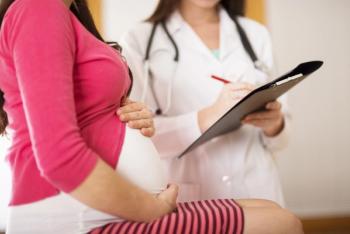
HPV series completion lags among boys
Findings of a recently published observational retrospective cohort study point to a need for increased efforts to improve timely completion of the human papillomavirus (HPV) vaccine series among boys.
Findings of a recently published observational retrospective cohort study point to a need for increased efforts to improve timely completion of the human papillomavirus (HPV) vaccine series among boys.1
By identifying correlates for vaccine series completion, however, the research also suggests targets for achieving that goal.
Conducted at Kaiser Permanente Southern California (KPSC), the study included 80,800 boys aged 9 to 17 years who initiated the HPV vaccine series during the years 2009 to 2013. Designed to analyze potential trends in the rate of timely vaccine series completion (defined as within 12 months of initiation) occurring with changing vaccine indications and Advisory Committee on Immunization Practices (ACIP) recommendations, the analyses stratified boys into 3 cohorts by date of vaccine initiation. The first cohort included boys first vaccinated in 2009 and 2010 after the vaccine was originally licensed for use in boys and the ACIP recommended permissive use for preventing genital warts.
The second cohort captured boys vaccinated initially in 2010 and 2011 after an anal cancer indication was added. The third cohort comprised boys with vaccine initiation in 2011 to 2013 after the ACIP recommended routine vaccination.
Overall, only 24.3% of the boys completed the series within 12 months, and the completion rates were similar among the 3 cohorts.
Analyses also were conducted to evaluate associations between clinical and demographic characteristics and vaccine series completion. In marginal Cox proportional hazards models, predictors of completion were younger age at initiation (11 to 12 years vs 13 to 17 years), having an assigned primary care provider, and receipt of the influenza vaccine in the year prior to HPV vaccine initiation.
Racial/ethnic differences in completion rates were also noted. Compared with non-Hispanic whites, Asian/Pacific Islanders were more likely to complete the series while the completion rates were lower among non-Hispanic blacks and Hispanics.
“HPV vaccination is becoming increasingly important in males among whom the incidence of HPV-associated oropharyngeal cancers has increased at an alarming rate and is anticipated to exceed that of cervical cancer among females in the United States by 2020. Nearly one-third of high-risk HPV infections occur in teens, females comprise the primary source of infection for males, and uptake of HPV vaccine in females remains suboptimal. Early HPV vaccination is important for protecting males, and series completion at the earliest age possible affords the greatest protection against potential HPV infection and related diseases,” says Bradley Ackerson, MD, lead author from the Department of Pediatrics and Pediatric Infectious Diseases, South Bay Medical Center, KPSC, Harbor City, California.
“We recommend that pediatricians and others who deliver care for adolescent males initiate HPV vaccination at as young an age as possible, preferably at 11 years, and provide the HPV vaccine at all opportunities to vaccinate. Older teens have fewer healthcare visits, which translates into fewer opportunities to vaccinate. Therefore, initiating the vaccine early and offering it when due at all visits is increasingly important. In addition, HPV vaccine initiation before 15 years of age allows administration of only 2 doses instead of 3 doses, further increasing vaccine compliance and reducing injections and cost while providing similar protection.”
The investigators noted that theirs is the first study evaluating HPV vaccine series completion in a large population that included that ACIP-recommended target population of males aged 11 to 12 years. Data on HPV vaccine series completion is also available from National Immunization Survey-Teen (NIS-Teen), but vaccine completion in NIS-Teen includes any individuals who receive the entire series before reaching age 18 years (ie, as long as 8 years after initiation), says Ackerson.
“NIS-Teen provides important data and trend information. Given that nearly one-third of high-risk HPV infections occur before 19 years of age, however, we felt it was important to analyze timely completion in our setting,” he tells Contemporary Pediatrics.
The investigators note that the generalizability of the study findings must take into account that the population represents members of a single healthcare system. Nevertheless, they believe that the results in other settings are likely to be similar considering the very large size of the KPSC population (>4 million members) and its socioeconomic and cultural demographic diversity.
“The KPSC population has been shown to be representative of the southern California population2 and is one of 9 Vaccine Safety Datalink sites whose population reflects that of the general US population on several key demographic and socioeconomic variables.3 Furthermore, our results are similar to those from another smaller study of males from a family planning clinic network,4” Ackerson says.
Ackerson told Contemporary Pediatrics that HPV vaccine initiation in KPSC was about 18.5% after the ACIP issued the recommendation for routine use in males, but more recently it has reached about 70%. In addition, the overall completion rate prior to age 13 years among the entire male population (not just vaccine initiators) is now approximately 40%.
“These data show we have made important strides using recommended strategies from the Centers for Disease Control and Prevention, ACIP, and American Academy of Pediatrics to improve HPV vaccine uptake and series completion,” Ackerson says.
References
1. Ackerson B, Hechter R, Sidell M, et al. Human papillomavirus vaccine series completion in boys before and after recommendation for routine immunization. Vaccine. 2017;35(6):897-902.
2. Koebnick C, Langer-Gould AM, Gould MK, et al. Sociodemographic characteristics of members of a large, integrated health care system: comparison with US Census Bureau data. Perm J. 2012;16(3):37-41.
3. Sukumaran L, McCarthy NL, Li R, et al. Demographic characteristics of members of the Vaccine Safety Datalink (VSD): a comparison with the United States population. Vaccine. 2015;33(36):4446-4450.
4. Hirth JM, Tan A, Wilkinson GS, Berenson AB. Completion of the human papillomavirus (HPV) vaccine series among males with private insurance between 2006 and 2009. Vaccine. 2013;31(8):1138-1140.
Ms Krader has 30 years’ experience as a medical writer. She has worked as both a hospital pharmacist and a clinical researcher/writer for the pharmaceutical industry and is presently a freelance writer in Deerfield, Illinois. She has nothing to disclose in regard to affiliations with or financial interests in any organizations that may have an interest in any part of this article.
Newsletter
Access practical, evidence-based guidance to support better care for our youngest patients. Join our email list for the latest clinical updates.

![Jodi Gilman, PhD, on cumulative prenatal adversity linked to adolescent mental health risk Document Jodi Gilman, PhD, on cumulative prenatal adversity linked to adolescent mental health risk Live? Do you want this document to be visible online? Scheduled Publishing Exclude From Home Page Do you want this document to be excluded from home page? Exclude From Infinite Scroll Do you want this document to be excluded from infinite scroll? Disable Related Content Remove related content from bottom of article. Password Protection? Do you want this gate this document? (If so, switch this on, set 'Live?' status on and specify password below.) Hide Comments [Experiment] Comments are visible by default. To hide them for this article toggle this switch to the on position. Show Social Share Buttons? Do you want this document to have the social share icons? Healthcare Professional Check Is Gated [DEV Only]Do you want to require login to view this? Password Password required to pass the gating above. Title Jodi Gilman, PhD, on cumulative prenatal adversity linked to adolescent mental health risk URL Unique identifier for this document. (Do not change after publishing) jodi-gilman-phd-on-cumulative-prenatal-adversity-linked-to-adolescent-mental-health-risk Canonical URL Canonical URL for this document. Publish Date Documents are usually sorted DESC using this field. NOTE: latency may cause article to publish a few minutes ahead of prepared time 2026-01-19 11:52 Updated On Add an updated date if the article has been updated after the initial publish date. e.g. 2026-01-19 11:50 Article Type News Display Label Author Jodi Gilman, Phd > Gilman, Jodi Author Fact Check Assign authors who fact checked the article. Morgan Ebert, Managing Editor > Ebert, Morgan Content Category Articles Content Placement News > Mental, Behavioral and Development Health > Clinical AD Targeting Group Put the value only when the document group is sold and require targeting enforcement. Type to search Document Group Mapping Now you can assign multiple document group to an article. No items Content Group Assign a content group to this document for ad targeting. Type to search Issue Association Please choose an issue to associate this document Type to search Issue Section Please choose a section/department head if it exists Type to search Filter Please choose a filter if required Type to search Page Number Keywords (SEO) Enter tag and press ENTER… Display summary on top of article? Do you want display summary on top of article? Summary Description for Google and other search engines; AI generated summary currently not supporting videos. Cumulative prenatal adversities were linked to higher adolescent mental health risk, highlighting the importance of prenatal history and early clinical monitoring. Abstract Body *********************************************************************************************************** Please include at least one image/figure in the article body for SEO and compliance purposes ***********************************************************************************************************](https://cdn.sanity.io/images/0vv8moc6/contpeds/e6097cb5e6d6c028c0d4e9efd069e69fdab6d00b-1200x628.png?w=350&fit=crop&auto=format)






